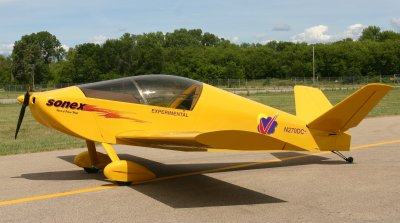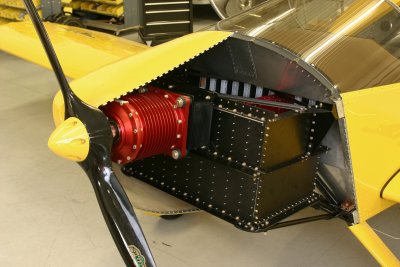Electric aircraft uses `lightest, most efficient` motor
An American manufacturer of experimental kit aircraft has unveiled a prototype battery-powered, two-seater aircraft that will be propelled by a specially developed electric motor. Sonex Aircraft says that the aircraft will be able to fly at speeds of up to 210 km/h (130 mph) and that its ten "safe boxes", each containing eight lithium polymer (Li-Poly) battery packs, will be able to keep it airborne for 45–60 minutes – or 15-20 minutes if it is performing aerobatic manoeuvres.

The aircraft’s 22.7kg brushless DC cobalt motor is claimed to be "the most powerful, lightest and most efficient of its type ever produced". The three-phase, 270V, 200A machine is slightly larger than a coffee can, and is said to have an efficiency above 90%. A modular core design allows the motor to be lengthened to deliver more power, or shortened if less power is needed. The picture below shows a view of the motor when the cowling is removed.

Sonex, which has developed the proof-of-concept craft in six months for less than the cost of a conventional aircraft of its type, has also been working on a controller for the motor. Initially, it will use Hall effect sensors to determine the motor’s rotor position, but it is also looking at using the motor’s back-emf to sense the position, thus potentially eliminating the need for the Hall sensors.
The safe boxes that hold the high-energy-density – but volatile – Li-Poly batteries, could be recharged in position on the aircraft, or removed and recharged elsewhere. This would allow them to be replaced with newly charged spare boxes for quick turn-arounds.
"By developing a viable electric motor and controller system for this proof-of-concept aircraft, we will open a door to future flight that we have only been able to dream of," says Sonex’s founder and president, John Monnett. "Self-launching, electric powered gliders already exist," he points out, "but the potential of electric power goes beyond that single use and relates directly to sport flying, aerobatics and high-altitude flight in purpose-built airframes."
Sonex will not be drawn on when a commercial version of its electric aircraft may be available or what it will cost, except to say that it will be "vastly less expensive than other things out there".





